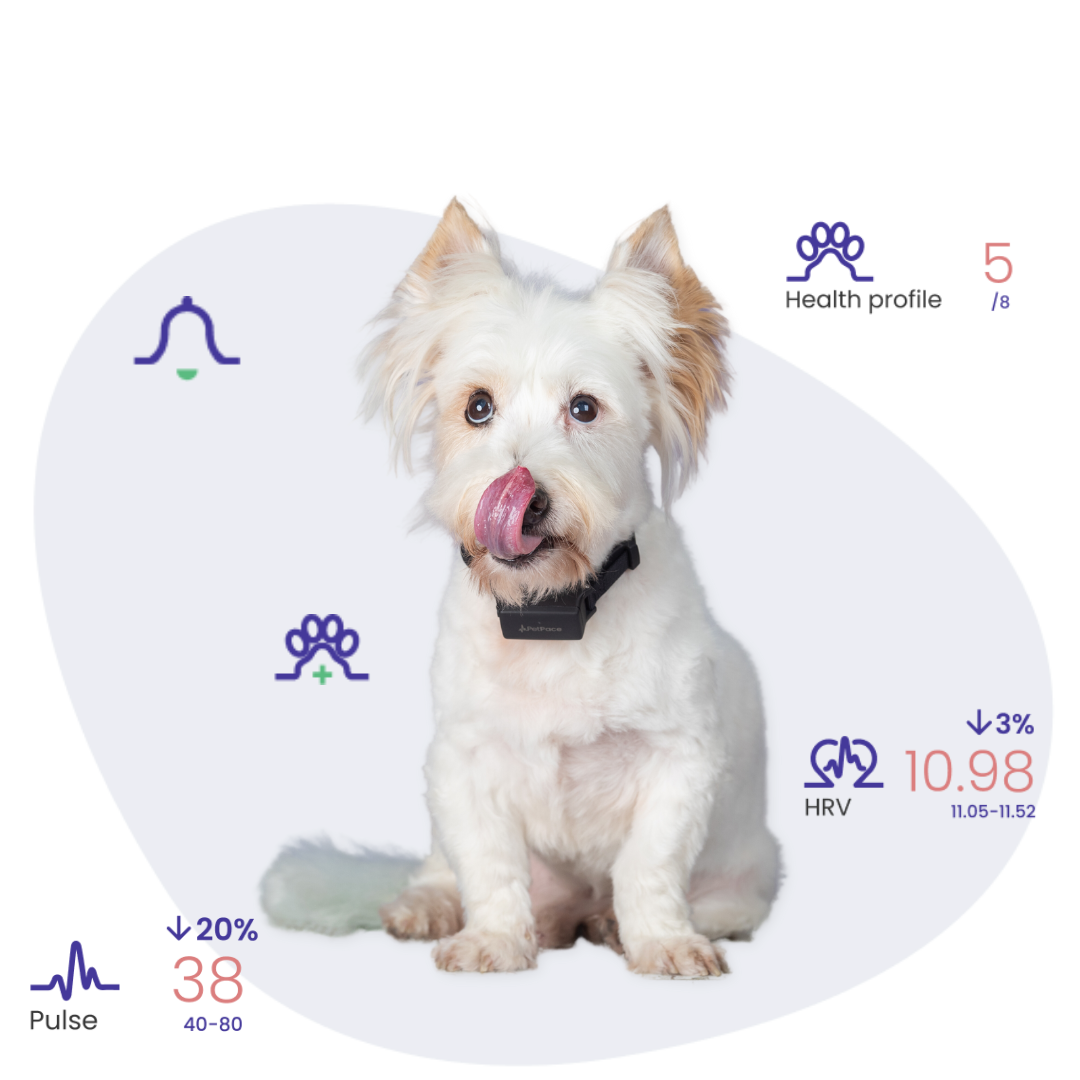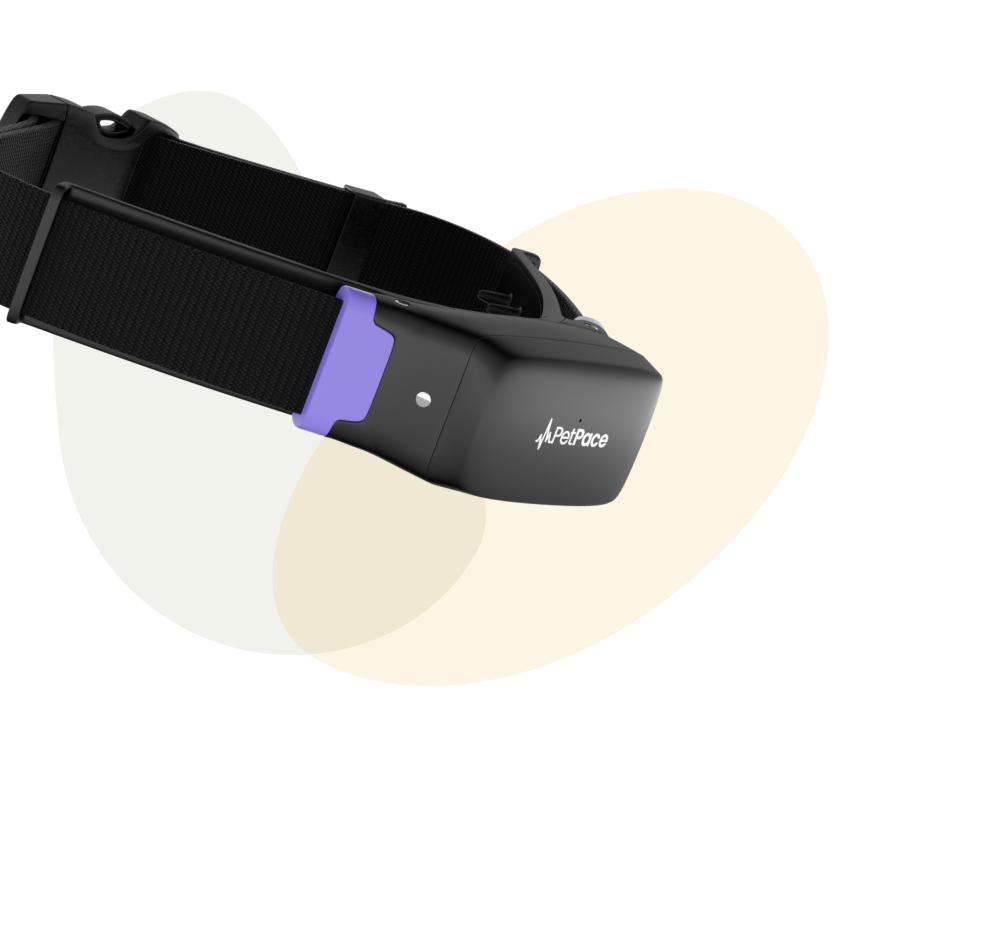Epilepsy and Seizures in Dogs
Not only do dogs and humans share a deep bond, but also health conditions like epilepsy and seizures. Owning a dog that tends to have seizures can be a struggle, though there are ways to reduce them and their severity. Here’s all you’ll need to know about life with an epileptic or seizure-suffering fluffy pal.


Monitoring with PetPace Health 2.0.
PetPace 2.0 smart collar continuously monitors various parameters related to seizures, including temperature, pulse, HRV, posture, and activity patterns. We’re actively developing an AI model to identify seizures. The aim is to enable remote seizure detection, providing timely treatment and a better grasp of seizure frequency for effective management.
Following the collar’s data (pulse, temperature, movement, etc.) combined with the Disease Management features, can aid in tracking the disease, where these indicators can reveal abnormalities suggestive of seizure activity.
Stay tuned for the upcoming release of a dedicated epilepsy algorithm in development.
All about seizures in dogs
Our team of researchers studied thousands of dogs and cats from across the globe, looking at different breeds, ages, sizes, and health conditions.
What’s a seizure?
Seizures, often referred to as ‘fits’ or ‘convulsions,’ arise from abnormal brain electrical activity, provoking movements.
It’s common to confuse seizures with epilepsy; consider seizures as symptoms and epilepsy as the underlying cause, similar to viewing a limp as a symptom of a broken bone.
To ensure your dog’s collapse is a seizure and not fainting or muscle weakness – consult your vet. If possible, capture a video of the episode with your smartphone to show the vet for accurate evaluation.
What can cause a seizure?
Seizure is a symptom of a condition originating in the brain, either caused by brain diseases, tumors, epilepsy, or problems that occur in distant parts of the body that indirectly affect the brain. These common conditions are usually linked to dog seizures:

In Young Dogs
- Liver shunts (abnormal blood vessels causing blood to bypass the liver)
- Low blood sugar
- Hydrocephalus
- Encephalitis
- Infection
- Epilepsy

In Mature Dogs
- Brain tumor
- Head trauma
- Liver or kidney disease
- Poisoning
- Epilepsy
Signs of Seizures in Dogs
-
Unconsciousness
The dog loses consciousness, isn't aware of the surroundings, and can't be woken. -
Stiffness and Rigidity
During seizures, there’s a lot of muscular contraction, so the dog is tense or rigid. Some dogs throw back their head and arch their spine. -
Tremors and Judders
Uncoordinated muscular contractions cause the dog to judder and shake. -
Paddling
The legs make rigid paddling movements. -
Loss of Bladder and Bowel Control
Many dogs soil themselves during a seizure. -
Champing and Salivation
Some dogs make involuntary biting movements with their jaws, can’t swallow, and drool heavily. -
Subtle warning signs
Such as restlessness, picky appetite, confusion, clinginess, or a change of character.
What to do in case of a seizure?
- Reduce all stimulations
loud noises, bright lights, or even touch. - Make sure they’re safe
look around to check for hazards such as falling down stairs or an open fire. Where possible, protect the dog from injury by surrounding them with cushions, and only move them in case of danger. - Record
If possible, try taking a video of the seizure and send to your vet for further consultation.
What happens after a seizure?
After a seizure, dogs can experience disorientation, increased hunger, and thirst. The brain typically takes about 24 hours to stabilize, making another seizure more likely at this time.
When a dog has multiple seizures within 24 to 48 hours, it’s termed a “cluster.” In such cases, your vet might prescribe rectal medication to calm overactive neurons and lower the risk of subsequent seizures.
Treatment and medication
Treatment typically involves medications to reduce seizure severity and frequency, aiming for a 50% reduction rather than complete elimination due to potential side effects from high doses. Common anticonvulsants like phenobarbitone and potassium bromide require periodic blood tests for therapeutic levels.
Another option is Imepitoin (Pexion ™), which offers a quicker action and fewer side effects. For challenging cases, specialists may prescribe human anticonvulsants or a combination of drugs to manage seizures.
